Scientific moth trap haul was much improved during a wet but balmy June night: 105+ moths of 31+ species. My hunch had been right based on the activity I’d seen around the actinic light after midnight. Despite the drizzle, it was almost balmy.
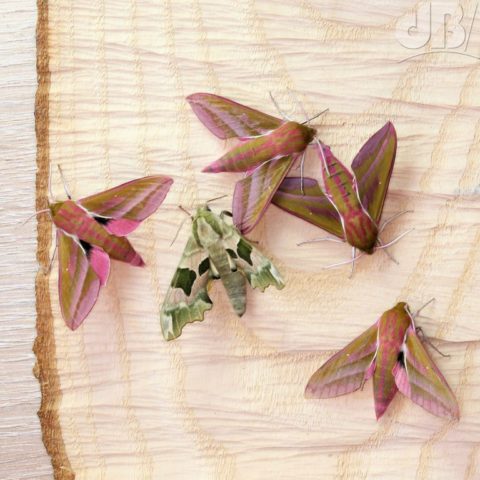
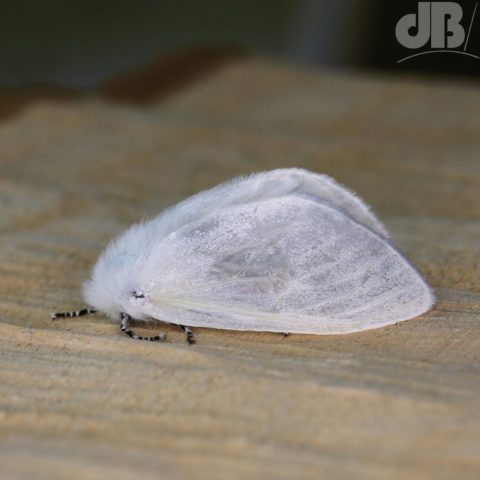
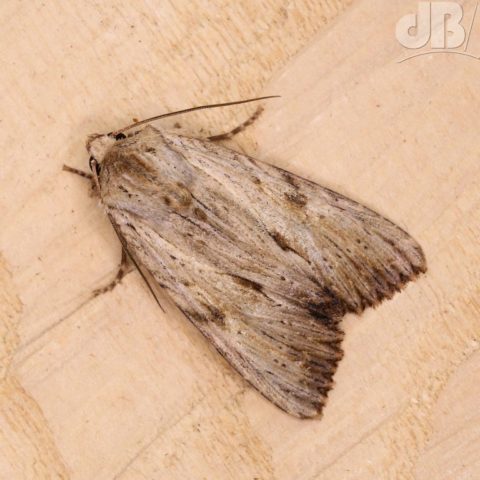
36 years in science communication
Scientific moth trap haul was much improved during a wet but balmy June night: 105+ moths of 31+ species. My hunch had been right based on the activity I’d seen around the actinic light after midnight. Despite the drizzle, it was almost balmy.



This is one of those moths that most readers will just think, “ah, yes, typical moth – boring, grey, brown, ewww”. And superficially, yes, it is not a lot to look at. But, it’s a bit of a rarity and it was drawn to my scientific trap on the night of 31st July 2018 and photographed in the trap the next morning. It’s only recently that my mothing and birding friend Ian was scanning through my Mothematics Gallery and noticed I’d labelled this as queried and not confirmed an ID.
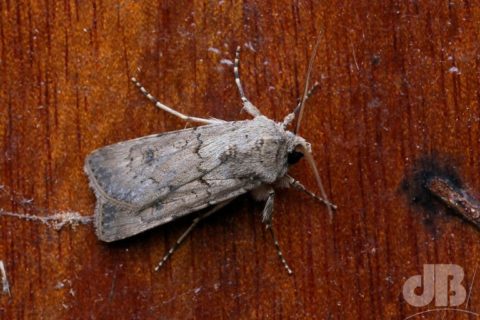
I have now confirmed it as Light Feathered Rustic (Agrotis cinerea, Denis & Schiffermüller], 1775). Indicators are that line about 1/3rd of the way down and also the finger-like projections towards the termen. However, August is well outside the moth’s usual May to June flying season. But, it is suspected of having a second partial brood later in the summer. Moreover, this is a rarity in VC29 (Cambridgeshire) and East Anglia in general.
I spoke to Bill Mansfield the County Recorder, he and others have said it’s definitely A. cinerea. Astonishingly, Bill’s last record for Cambridgeshire was in 1991. He also points out that the only time it was recorded in Huntingdonshire was 1951 and Northamptonshire has no record of it since 2004. He is checking with Bedfordshire.
The species is one of the family Noctuidae, colloquially known as owlets, little owls (Noctua is Latin for little owl). They’re generally night-flying species and their larvae (caterpillars) known as  “armyworms” and “cutworms” are plant pests – they form destructive garrisons of larvae and cut the stems of plants. There are almost 12000 species of owlet moths around the world.
Tonight’s almost full moon, with Jupiter to the right, you can just about see the planet’s own moons that landed Galileo in jail…

No spectacular Hawk-moths today, nothing even particularly brightly coloured or intriguing at all…except for this little creamy white one with two distinctive black spots and lots of speckles.
![Fenland Pearl, Anania perlucidalis (Hübner, [1809])](https://www.sciencebase.com/images/Fenland-Pearl.jpg)
According to the UK Moths site, it was first seen in the British Isles on a Huntingdonshire fen, just up the road from us here in Cambridgeshire. It’s a localised species, lives on fenland and coastal parts of East Anglia and the South East of England. The site says little is known about the lifecycle of this species although it is thought that the larvae feed on Cirsium and Carduus thistles. The Wikipedia is very terse but corroborates it as a June-July and August flyer depending on location and that the larvae feed on Cirsium.
I keep a log of all the moths drawn to the scientific trap as well as posting species new for me (NFM) or new for the year (NFY) in my Mothematics Gallery.
It’s the fiftieth anniversary of George Dubya’s favourite childhood book – The Very Hungry Caterpillar by Eric Carle…of course, Dubya was 23 when it was first published, which might explain a lot. I don’t think Trump had graduated to storybooks by that age.
But, I have some shocking news for you…to my eye, The VHC looks like a type of lepidopteral larva known as an inchworm or geometer, the type that measure out the marigolds…well…actually the earth, hence their name “geo-meter” – earth measurer.
Anyway, inchworms don’t metamorphose into beautiful butterflies as The VHC apparently does in Carle’s book…they, of course, transform into moths! Which of the 23000 Geometridae is represented in Carle’s book I cannot tell you. That said, have a look at the larva of the Peppered Moth, it’s close. Moreover, the Peppered Moth has a special place in natural history, you can read about its industrial evolution here.

Now…the brown and grey moths are not intrinsically boring, each is the pinnacle of millions of years of evolution. But, when you spot something in the scientific trap on a cold, wet morning that isn’t just one of the 25 Heart & Darts in there, nor one of a handful of Vine’s Rustics, Turnip or Cabbage moths, then it is something of a treat. The Puss Moth was a big highlight, and of course, the various Hawk-moths that have come along in recent weeks including Lime, Poplar, Eyed, Elephant, Small Elephant, and Privet.
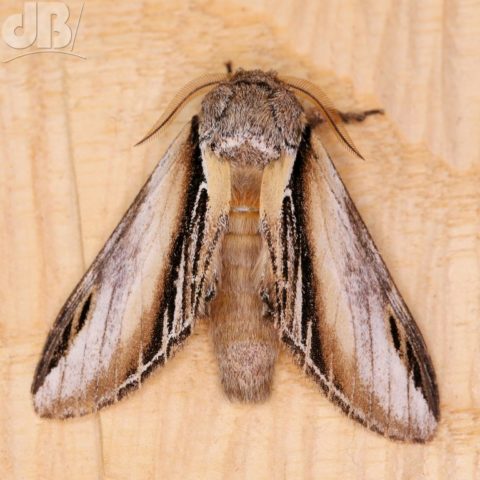
But, there are some moths that seem so delicately marked as if dusted with charcoal and pastel powders. Take the Swallow Prominent, Pheosia tremula. Tremulous it is indeed, oscillating its wings all the while I tried to get a snapshot but with only a brief interlude somewhere cold would help with when a snappy shutterspeed would not suffice.
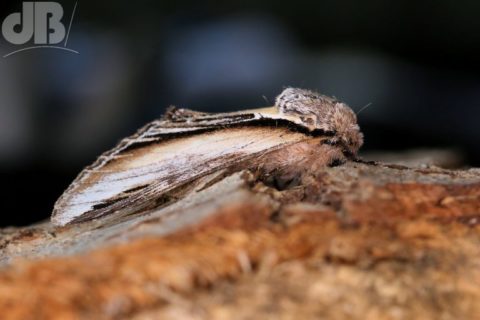
There is a Lesser Swallow Prominent, P. gnoma, which isn’t always lesser, or smaller, at all, and is distinguishable in the fully developed adults really only in the difference in one of those charcoal lines and the creamy, white wedges along its wings. In P. tremula the wedge is a thinner slice than in P. gnoma. I’ve had the former in the trap now, but not the Lesser, yet.
You can perhaps see why this moth, which is one of several “Prominents”, has that name for the tuft that sticks out, best viewed side-on, as in the upper of my two photos here. Now, the second half of that name…I reckon it’s to do with the fact that the larvae feeds on the leaves of the shrubby willow known as the sallow, and nothing to do with swallowing and certainly not the migrant birds. At some point, a “w” was added. Peter Marren corroborates this idea in his book on moth names, but doesn’t give any more of an explanation than came to my mind.
I had a look on the German and French entries in Wikipedia to see if there were any additional clues. The French call this moth “La Porcelaine”, which means “The Porcelain” (cowrie shell). In Germany it is “The Poplar Toothspinner”, its larvae also eat poplar leaves and that spinning tooth part refers to the toothy-looking tuft on its back. Toothspinner equates to the genus Notodontidae, of which all of the Prominents are members, including the Coxcomb, Iron, Pebble, and Pale, photos of which are in my Mothematical Gallery on my Imaging Storm site.
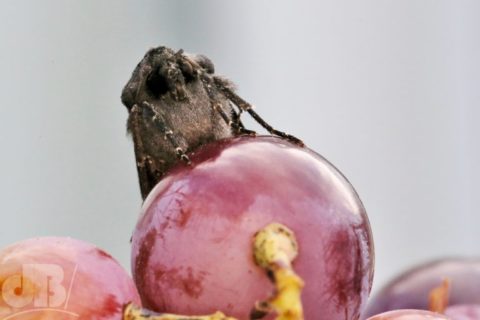
The names of moths are marvellous. You’ve got your Death’s Head Hawk-moth and your Flame Shoulder, then there’s the Black Rustic and the Rustic Shoulder Knot and not forgetting Angle Shades. There’s even a moth known as The Uncertain. Then, there are the carpet moths. These aren’t carpet-eating moths, they’re species so-named because of their whimsical resemblance to patterned carpets.
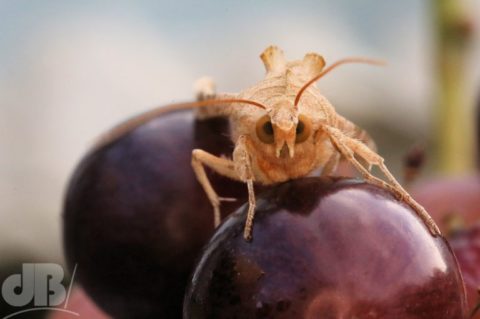
Carpets, you say? How exciting…
Well, back in the day when pioneering naturalists were first recording all these different species carpets were exciting…well, if not exciting, certainly a luxury. Nobody really had carpets back then, the rich and landed gentry aside, and even then a carpet was a special thing, an underfoot treat not to be down-trodden nor trampled underfoot.
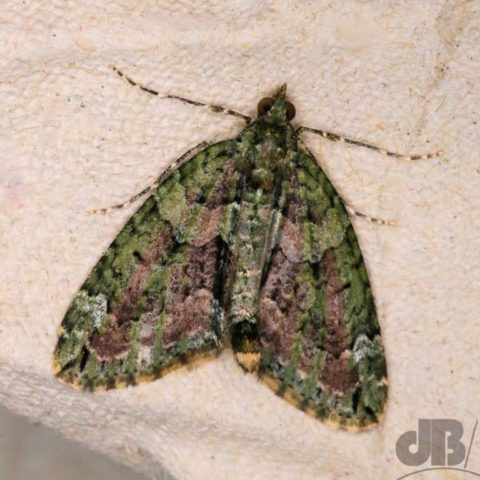
The Burnished Brass and the Feathered Gothic might have a kind of steampunk glamour to our ears, but in 1775 when Denis & Schiffermüller, identified, pinned, and named the Least Carpet, Idaea rusticata, the name was not an insult it was a compliment. Although, that said, this particular species doesn’t look like much of a luxury carpet being as it is, camouflaged to look like a bird dropping.
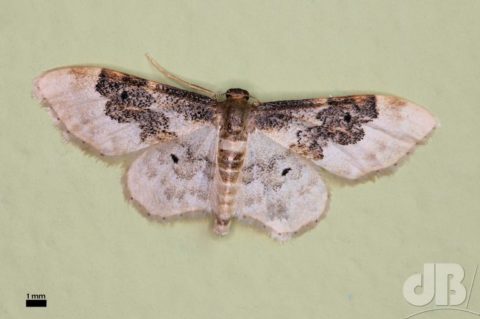
The Least Carpet is found across Europe, the Middle East and North Africa. In the UK it was initially found only in London and then the south-eastern counties it extended its range and abundance between 1968 and 2007, although records as far north as Cheshire dating back to 1999 may well be of migrants/vagrants.
Oh, and just to reiterate…the Carpet moths do not eat carpets. In fact, no moths eat carpets and only the larvae of a tiny handful of species eat textiles, such as wool. Many larvae eat plants of course, some carrion, but while we imagine the bees are the most important of our pollinators, moths are a major factor in doing that job too. #MothsMatter And, of course, they and their larvae are an important food source for birds and mammals, including bats.
Moths are drawn to flames, to bright lights, and as any good moth-er knows, ultraviolet. But why? That question has no answer…yet…although there is plenty of #DeceivedWisdom.
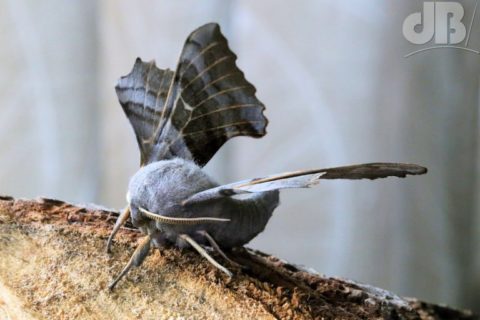
The first and perhaps most well-known explanation as to why moths are drawn to light is that they normally use the moon to navigate and an artificial light confuses their biological sat nav. This is very unlikely. Most moths don’t migrate and in general, don’t really need to navigate they just need to flutter around their locale to find food and a mate.
But, some moth-ers might say, there is always less of a haul in the UV scientific trap on nights when there is a full moon. The obvious explanation for that is that moths are simply less active because the night itself is brighter and they would be more exposed to predators, as they might be during the day. Although, bats are one of their biggest predators and, of course, they don’t rely on vision to catch moths, rather echo location.
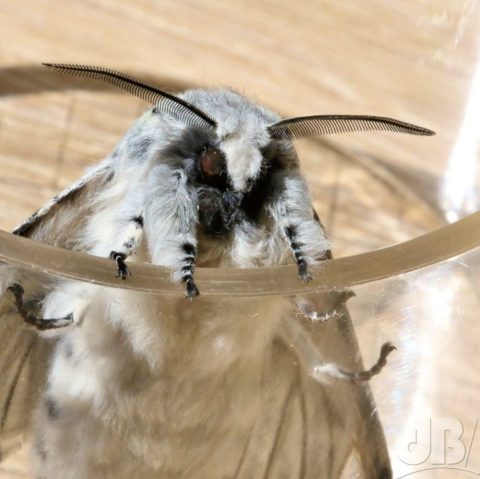
Lots of species aren’t drawn to light at all, they prefer odour and specifically the pheromone odour of the female, at least that’s the case of the day-flying males of the Emperor species, discussed here previously. There was a theory in the 1970s that suggested male moths somehow confuse the light source with the luminescence of the female’s sex pheromones. But, while those pheromones can be made to glow under certain conditions, generally in a laboratory, they don’t glow at the same wavelengths as ultraviolet. More to the point, females are drawn to light too, so it’s probably not about moth sexual attraction.
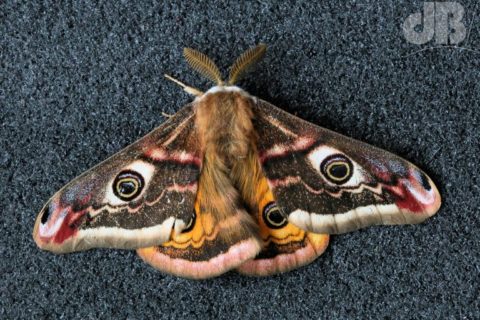
My own pet theory, is that there’s some kind of confusion in the moth brain when they see a light. Perhaps there is some kind of “cross talk” between their senses (the same kind that we know of in people with synaesthesia who can smell colours or see music). Could those moths that are drawn to light be anticipating something else, maybe the light “smells” like food or sex attractants.
Maybe it’s a more blunt effect. The light source saturates their senses and stimulates the reward neurones in their brains as might an orgasm in higher animals or, indeed, opium derivatives, and in doing so in such an intense way that they cannot help but be drawn to that flame and to circle it.
Gunnar Brehm of the University of Jena, Germany, told me that, unfortunately, there is no answer to the moth-to-a-flame problem. “It would be great to have one,” he said. “I agree that the moon theory is not likely to apply and some sort of confusion happens.” So, perhaps my theory is close to what’s actually going on…
Brehm adds that “Short wavelengths at night have simply not been there before humankind invented artificial lights.” He and his research team are currently working on the problem. “We are carrying out choice experiments with different wavelengths – four lamps in four corners of a hall. When moths are offered white, green, blue, and UV, the vast majority is attracted to UV,” he told me. “However, when I replace UV by red the next night, the majority of moths is then attracted to blue.”
This suggests that short wavelengths (higher frequency, greater electromagnetic energy) are always the most attractive ones to moths that are attracted to light. Brehm adds that, “When there are no short wavelengths, a yellow light can also attract insects. That explains why moths can still be attracted by candlelight.”
Of course, the shorter the wavelength of light, the higher its energy in the electromagnetic sense. I’m talking light energy here, not the electrical wattage of the bulb. My hypothesis about why moths, and other insects, are attracted to light would fit with this, more energy would be more stimulating. Males are more frequently attracted to light than females, so, again this suggests the male moth psyche perhaps seeks out the stimulation or is more readily bedazzled by it.
In the absence of UV, much lower energy yellow light would have to suffice and would have done for millions of years before humanity came along with its actinic, fluorescent tubes, mercury vapour lamps, and UV LEDs.
UPDATE: 30 Jan 24 – New work from Sam Fabian, an entomologist at Imperial College London suggests that moths try to put their backs to any light source and this is why they end up spiralling around a lamp. That, doesn’t seem to explain what initially draws them to a flame or lamp, however.
Fellow moth-ers might be interested in Brehm’s work on assessing UV LEDs for attracting moths here and here. He and his colleagues have pioneered lepidopteral science with UV LEDs. One advantage is that LEDs can be very precisely configured to give a particular range of wavelengths at a specific wattage. This means they can be used to test attraction at different wavelengths with the source at a standard output energy (unrelated to the radiation frequency/energy).
“We are working with modified types of the described lamp (first reference above), and it was possible to standardize the wattage of the lamps; so the emission is very similar but the wavelength is different,” Brehm told me. “We number each specimen, determine the sex and count each day what is caught and not caught.”
Brehm’s team has found significant differences between species: in some, males and females are attracted in similar quantities, in others far more males are attracted, but the attraction of short wavelengths appears to be rather universal,” he adds. The research will be written up for scientific peer review and publication later this year.
Despite a very wet night, there were 68 moths of sixteen species drawn to the actinic light trap overnight, including just one that was new to me, the Small Elephant Hawk-moth, Deilephila Porcellus. Unlike most of the other Hawk-moths, this one seems quite small, although bulkier than the vast majority of moths. The Small EHM has the same pink and olive colours as its cousin the much larger Elephant Hawk-moth. The Small EHM has a wingspan of about 40-45mm while the ever-so-slightly duller, but nevertheless gaudy, EHM is 45-60mm.
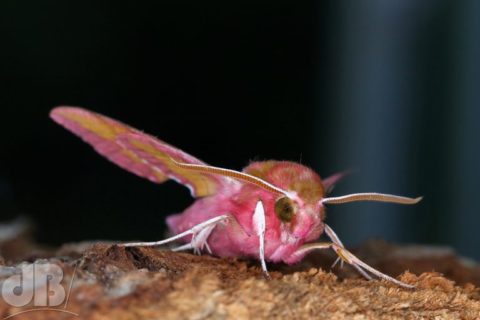
Neither moth is named for its colouration nor for any resemblance to elephants pink or otherwise, the name refers to the larva, the caterpillar, which is dully and greyish brown and somewhat wrinkled and looks a bit like an elephants trunk. Two large “eyes” at one end might be interpreted as the trunk’s nostrils whimsically.
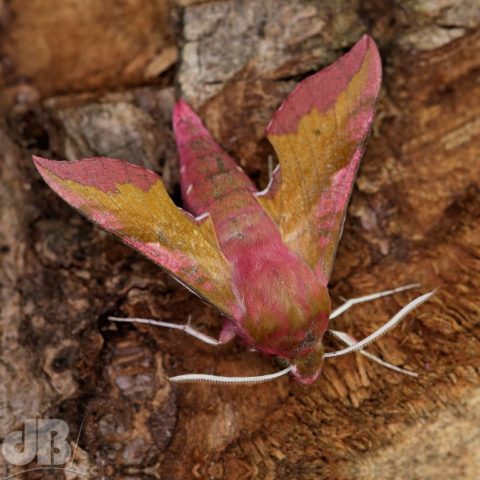
Usually, you visit an RSPB bird reserve to see the birds. There’s often other wildlife, plants, scenery too, but the usual focus is the birds. Months ago, we booked our place on one of the infrequent but regular site open days at the otherwise “closed to the public” RSPB Hope Farm in Cambridgeshire. Having partied with our choir last night, we almost missed our day out on the Farm.
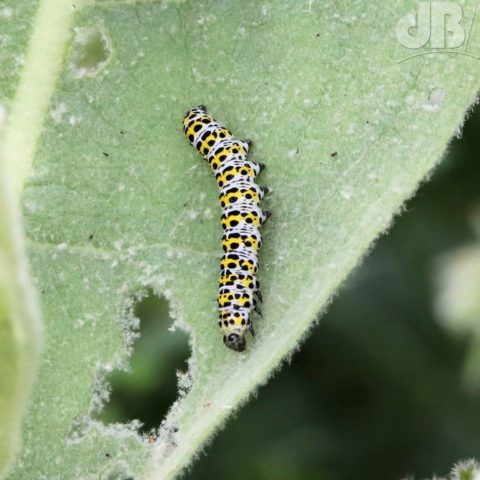
There were lots of families enjoying the sunny spells and the warmth, making wormeries, netting insects, partaking of the icecreams and Scout barbecue. So, instead of attempting to do any bird watching, we joined a guided tour of the wildflower meadows up the hill to see butterflies and saw quite a few nice species: Common Blue, Small White, Large White, Painted Lady, Small Tortoiseshell, Meadow Brown, Gatekeeper, and maybe one or two others. There were a few micro moths flitting about too.
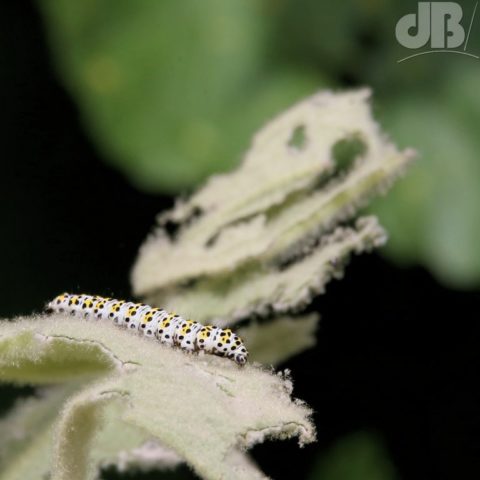
Mrs Sciencebase had actually spotted something orange and unusual at the beginning of the walk after we’d watched Mullein moth caterpillars feeding on a mullein plant. Mullein moth adult is in my Mothematics photo gallery, pictured below:
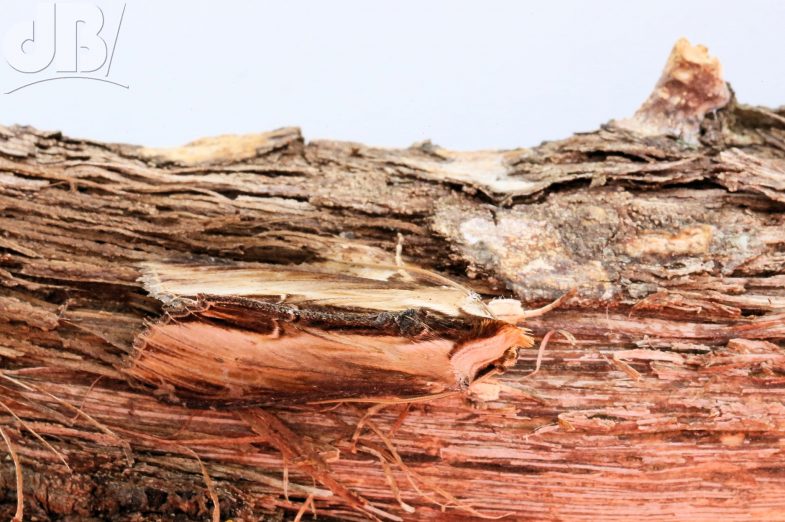
The orange moth was definitely a day-flying moth, nobody, including the guide knew its identity. I took photos and after the tour, we headed to the identification station where they had books and neither the guide nor myself could find it in the moth book. Mrs Sciencebase tried the butterfly book, which had a day-flying moth section and almost immediately ID’ed it as the Burnet Companion moth, Euclidia glyphica. Nice.
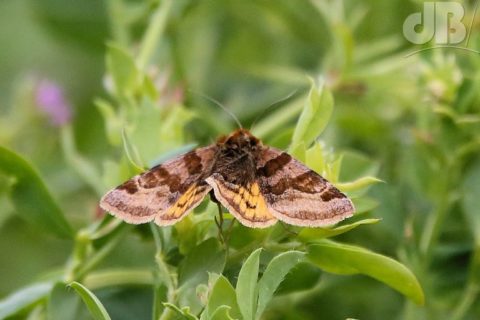
Trip to RSPB Hope Farm also fed into our #PondLife as we bought some wildflower plants to add to the area behind the pond to help “wild” it a little more: Wild basil, Foxgloves, Red Campion, St John’s Wort etc